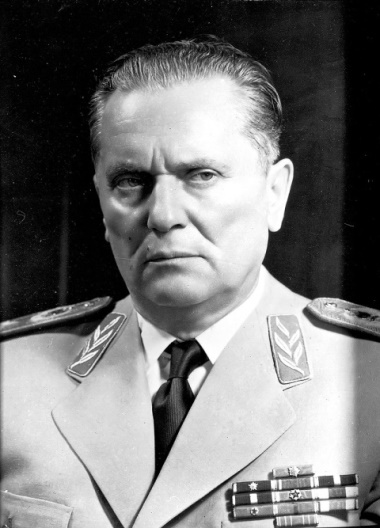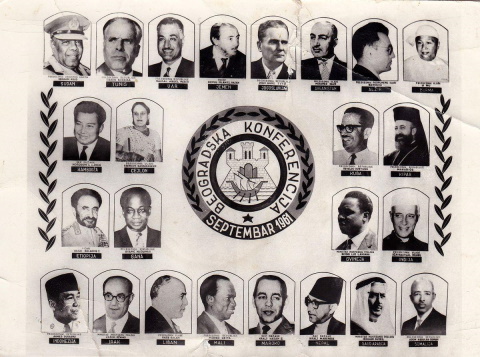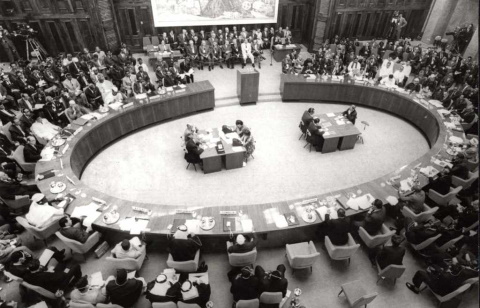

Table of Contents
Introduction
The Cold War is often depicted as an era marked by a struggle for global dominance between two blocs led by the USSR and the US. Such representation is quite reasonable, yet it clouds our view on the past by focusing it on only a fraction of the historical horizon. There were more nations and states than just the two giants, many of which gained independence in their struggle against colonialism and imperialism. As the number of those smaller, often quite poor and underdeveloped, nations continued to rise, their leaders found that strength in number is better than nothing, forming the so-called third Cold War bloc – the Non-Aligned Movement (NAM).
Caught in the crossfire
Birth of an idea
The principal ideas of the NAM were neutrality, equality, cooperation, peaceful coexistence, and other similar humane principles. As such, pinpointing the exact root of the movement can prove to be a difficult task. Some tend to go to the period before World War II when initial anti-colonial movements began forming around the globe, yet most tend to begin their stories during the 1950s. As the struggle for dominance between communists and capitalists expanded, often dragging other unwilling nations into the commotion alongside them, some nations looked for a solution. Initial sprouts of the idea for a neutral movement came from India. Prime minister Jawaharlal Nehru and his associates began using the term “non-aligned” by 1953. However, Indian diplomatic doctrine at the time wasn’t aimed at creating an international organization but aimed more at bilateral relations between nations.

Josip Broz Tito - President of Yugoslavia (1953-1980)
Then in 1955, the Afro-Asian Conference was held in Bandung, Indonesia. There the aforementioned ideals of the Non-Aligned Movement were formulated with a 10-point declaration published as a concluding document of the conference. Thus, in ideological terms, many see the Bandung Conference as the starting point for the creation of the NAM. Yet, once again no further action was made towards creating an association of states in the name of non-alignment. The first steps in that direction were made by Yugoslavia and its charismatic leader Josip Broz Tito. Though Yugoslavia wasn’t present in Bandung, Tito invited Nehru and Egyptian president Gamal Abdel Nasser to meet with him on Brioni (Brijuni) Island in 1956. There these three nations signed a cooperation declaration, providing a first actual step towards the actualization of the movement.
From an idea to a movement
Over the next several years, the idea of non-alignment continued to spread across the newly liberated nations, sometimes crystallizing into some kind of local conferences or national foreign policies. All the while, the Cold War continued to exert more and more pressure on smaller states followed by continued decolonization of the world. In such an international atmosphere, these neutral states tried to act in the United Nations, reacting to crises (Suez or Hungary in 1956) ad hoc or in some limited joint initiatives. However, these were often shut down by vetoes from the US or the USSR. It became obvious to many, including Tito, that more coordination and cooperation was needed if such actions were to succeed.
The Belgrade summit of 1961
In the late ’50s and early ’60s, Tito went on several long trips around the world, talking to various leaders preparing the stage for the first Non-Aligned Movement conference which was held in 1961 in Belgrade.

Poster of representatives participating in the Belgrade summit of 1961.
The Conference of Heads of State or Government of Non-Aligned Countries, as it was officially named, was conducted under the guidance of five leaders and their nations. Apart from the already mentioned Tito, Nasser, and Nehru, leading the NAM were Sukarno from Indonesia and Kwame Nkrumah from Ghana. Together they were seen as founders of the movement, contributing to it in their own way. The conference proved to be a great success, despite having only 25 full members. At the very least, the entire world noticed, with both the US and the USSR expressing their dissatisfaction with the NAM.
Organization of the NAM
Summits and leaders of the movement
To understand what role and how influential the NAM was, it is first vital to understand how the movement functioned. The most significant fact is that the movement wasn’t founded by any kind of charter nor was there any organizational structure. In the early stages, this boiled down to the consensus of the participating members on how they wanted the conference to play out. Yet from Belgrade (1961), it was clear that the central activity of the NAM was to be the summit conference. These played the role of the highest level of decision-making and coordinating body, while also being the media-covered event through which the movement would voice their policies and actions. The head of states would meet and through consensus form a general course of the NAM. Initially, these conferences were organized ad hoc, with Cairo (1964) and Lusaka (1970) acting as hosts. Yet by 1973 and the summit in Algiers it became an agreed practice for the head of states to meet every 3 years.

1st summit, Belgrade - 1961
At the beginning of every meeting, since Belgrade, a chairperson was elected to lead the summit. However, from 1970 the activity of the chairpersons began to expand beyond a single conference. Leaders of the NAM slowly assumed the role of movement coordinators. They were expected to maintain communication between member states, ensuring continuity of policies and actions set at the conference. Yet, like the movement, this role remained largely undefined and depended on the capabilities and proactivity of the elected chairperson. As for the decisions of the movement they were enforcing, like the organization of the NAM, they were based upon the consensus of the summit meeting. Throughout the conference, heads of states would hold speeches, while numerous lesser committees would hammer out the several final documents published by the end of the summit.
![A group photo of leaders in the 1976 Colombo summit along with their signatures. [source]](1976-colombo-summit-signatures.jpg)
A group photo of leaders in the 1976 Colombo summit along with their signatures. [source]
Minor councils and membership issues
Besides the major summits, as the movement became more organized, other meetings were organized. Most notable was the Preparatory Committee and Coordinating Bureau. It played a dual role in organizing the next summit as well as implementing the resolutions. It was the second most important body of the Non-Aligned Movement. It was more defined and better organized from 1970 and onward. During that decade, the movement organized other minor bodies like ministerial meetings, working and contact groups, solidarity funds as well as informal groups and meetings, held in organizations like the UN or the Arab League. All of these played a role in organizing and communication between the states, allowing them to act on the world stage between the summits. Furthermore, solidarity funds and meetings focused on the economy worked on promoting economic cooperation. Those played an important role in the development of the nations and dealing with the economic crisis of the 1970s.
Finally, there was the question of what states were eligible to become a member. First and foremost, a country needs to express willingness to become part of the movement, while exhibiting at least basic “non-aligned foreign policy”. This meant there were no military ties to either bloc or bilateral agreements with USSR or US, no foreign forces stationed on its soil. Furthermore, it had to follow ideas of neutrality, equality, and peace, as well as other principles of the movement.
Yet, like other aspects of the NAM, these provisions were also rather undefined, leaving quite a wiggle room for accepting members. In the end, it came down to the consensus of existing members if they were willing to accept a new state or not. Such policy led to several controversies, as some nations were accepted despite having a dubious position of neutrality. It is also worth noting that besides full state members, observer and guest status existed, allowing for even more maneuvering room for the NAM. Apart from countries, various organizations, and movements, especially anticolonial ones and those fighting for independence. The best examples were the Palestine Liberation Organization (PLO) and the South-West Africa People's Organization.
(Dis)functionality of the NAM
Strengths and weaknesses of the Non-Alignment
A movement based on a loosely organized structure, a wide-ranged membership, and broad consensus as the basis of action and policies doesn’t sound like being capable of influencing much of world history. Especially if it was caught between two blocs led by two superpowers struggling for dominance. Despite that, the Non-Aligned Movement managed to leave its mark, if nothing else than by its sheer numbers. As the movement was developing and getting better organized, it also grew. In 1973 it crossed 102 nations attending the summit, with 75 being full members.
By 1979 conference in Havana, it numbered 131 attendees, with 92 member states. To put it in perspective, the UN had 152 members in that very same year. This meant that the NAM if organized well, could exert a substantial amount of pressure. An example of such action was in 1974 when the US, France, and Britain vetoed the expulsion of the Republic of South Africa on the UN Security Council. As a response, the NAM organized a vote in the General Assembly managing to secure an overwhelming majority to suspend RSA, though without full expulsion. Furthermore, with such a broad base, the NAM could play on its media influence, to sway the world public on its side.
Different agendas
However, such strong responses and action hinged on the cooperation of too many nations. Such a unified stance was in reality more of a rarity than a rule. There were too many different national and ideological policies, local needs, and issues, causing many conferences to go through a tug of war for their agendas. An additional issue was that despite the sheer numbers of member states, all together they lacked any practical military or economic power to exert much pressure on the so-called developed world. A possible exemption was the oil-producing nations, which sometimes used oil prices for such purposes. With that in mind, usually the most the NAM could do is issue statements from a moral high ground, condemning certain actions, such as the US invasion of Vietnam. That kind of pressure was often too weak to bring a change to the world.
In the end, the sheer massiveness of the movement was its biggest strength and its biggest downfall. By continuous pursuit for expansion, some questionable members were admitted, for example, Vietnam (1976) which had Soviet bases on its soil, or Malta (1973) with British bases, or even Somalia (1961) which had both Soviet and American presence. In the end, the members couldn’t get away from the Cold War, as they swayed one way or another, causing a growing rift among the members. This weakness is best showcased in the Soviet invasion of Afghanistan (1979), a NAM member. In the UN, most NAM nations voted to condemn that action, yet Cuba voted against it as it was too indebted to the USSR. To make matters worse, at the time Cuba held the chairmanship of the NAM. The inability to act in any feasible way was also exampled by the inability of the movement to act when two members waged war against each other, for instance in the 1977-78 clash between Cambodia and Vietnam. Thus, the NAM proved to be stronger on paper and in words, than in a factual influence over the historical development.
![A logo of the Azerbaijani chairmanship of the Non-Aligned Movement. [source]](azerbaijani-chairmanship-non-aligned-movement.png)
A logo of the Azerbaijani chairmanship of the Non-Aligned Movement. [source]
Legacy
Nevertheless, the legacy of the movement shouldn’t be overlooked. It provided a stage for numerous newly liberated states to gain recognition and connections while preaching some rather humane and respectable ideals of peace, disarmament, cooperation, equality, justice, etc. The Non-Aligned Movement gave a voice to many nations often left disenfranchised. Finally, despite being characterized by the struggles of the Cold War, the NAM persevered after the US-Soviet competition ended in the early 1990s. It still convenes every 3 years, today numbering 120 full member states. Though the movement may not be as vocal or important on the grand scale, it still works on cooperation and solidarity of the world, a cause worthy of support.
Online sources
Sources/Further reading
-
S. Bott, J. M. Hanhimäki, J. M. Schaufelbuehl and M. Wyss, Neutrality and Neutralism in the Global Cold War Between or within the blocs?, Routledge, 2016.
-
Jürgen Dinkel, The Non- Aligned Movement: Genesis, Organization and Politics (1927– 1992), Brill, 2019.
-
Guy Arnold, Historical dictionary of the non-aligned movement and third world, Scarecrow Press, 2006.
-
N.Miškovic, H. Fischer-Tiné and N. Boškovska, The Non-Aligned Movement and the Cold War : Delhi, Bandung, Belgrade, Routledge, 2014.
-
Jeffrey James Byrne (2015): Beyond Continents, Colours, and the Cold War: Yugoslavia, Algeria, and the Struggle for Non-Alignment, The International History Review,Volume 37, 2015 - Issue 5.
-
S. I. Keethaponcalan, Reshaping the Non‑Aligned Movement: challenges and vision, Bandung J of Global South (2016) 3:4.
-
Marco A. Vieira, Understanding Resilience in International Relations: The Non-Aligned Movement and Ontological Security, International Studies Review (2016) 0,1–22.
-
Hennie Strydom, The Non-Aligned Movement and the Reform of International Relations, Max Planck Yearbook of United Nations Law, Volume 11, 2007, p. 1-46.
-
Dragan Bogetić, Nesvrstanost kroz istoriju, Zavod za udžbenike Beograd, 2019.
-
Tvrtko Jakovina, Treća strana Hladnog rata, Fraktura, 2011.
